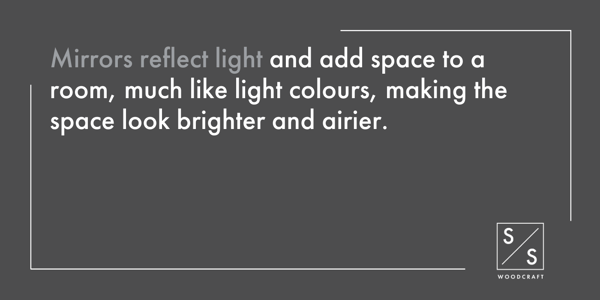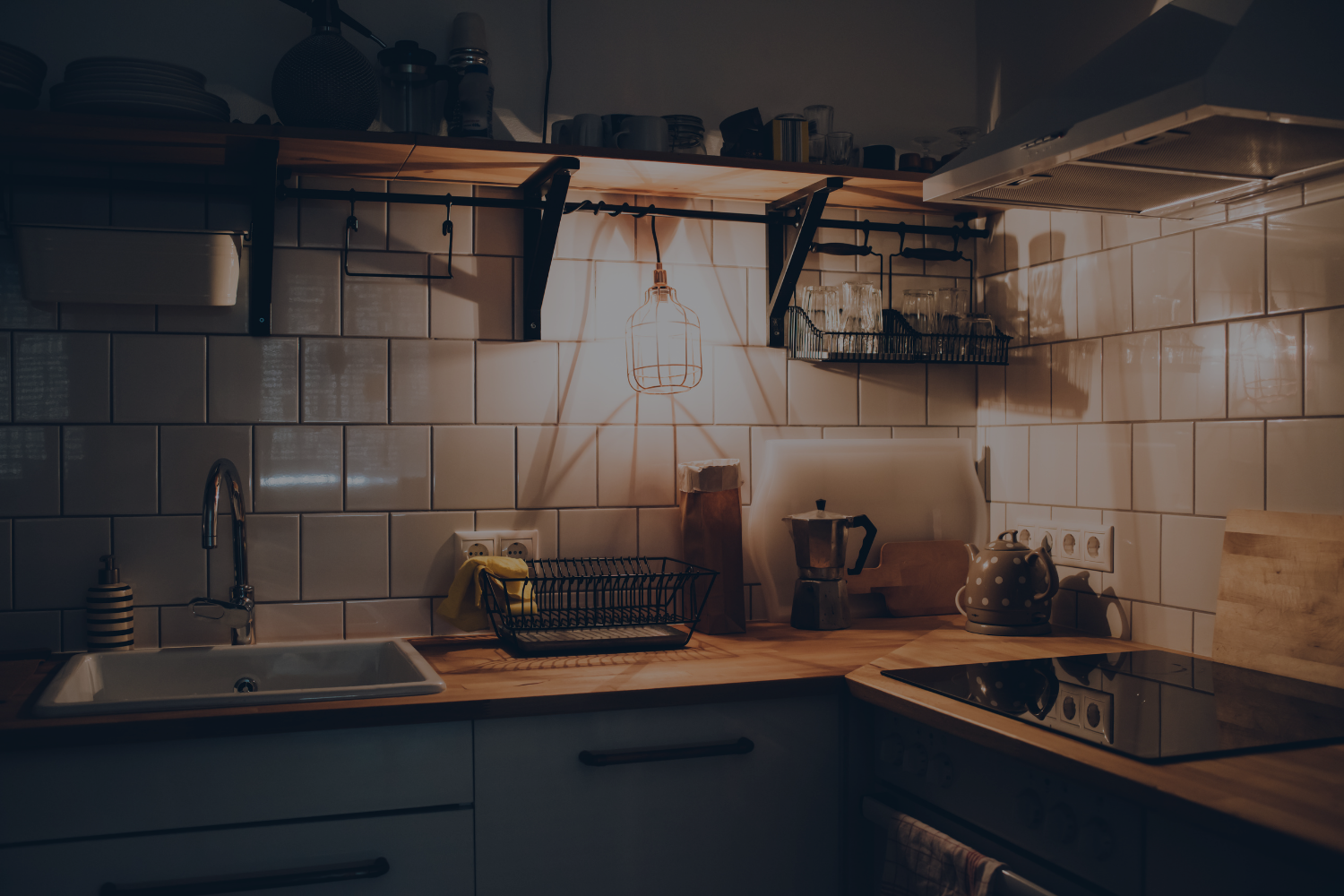Kitchen Lighting Tricks for the Winter Months
January 26, 2021Your kitchen is one of the busiest parts of your house, so it’s important to make sure the area is well-lit. This can be especially tricky during the wintertime when days are shorter and your kitchen doesn’t get as much natural light.
Bulb brightness, colour temperature, wall colour, windows, mirrors, and other design elements all determine how much light you get in your kitchen.
We’ve compiled a few helpful tips and tricks for lighting up your kitchen and fighting any wintertime blues.
Colour Temperature Essentials
Mastering the science of colour temperature will help you choose the perfect lighting for your kitchen. We’ll start by going over some of the basic rules.
First off, the brightness of a bulb is measured in lumens. The more lumens, the brighter the bulb. Light colour is measured using Kelvin. Higher values are “cooler” and have more blue tones, while lower values are “warmer” and have more orange tones. When you buy light bulbs, they should come with this information on the package.
There are plenty of light bulb and fixture options to help you tone the lighting in your kitchen. The most common bulb options include soft white, warm white, daylight, and bright white.
Soft White (2,700 to 3,000 Kelvin)
Soft white bulbs are typically the warmest choice. These mimic the cozy, yellowish-gold tones of traditional incandescent bulbs. Soft white bulbs are best suited for use in living rooms and bedrooms, but they don’t always make for great lighting in the kitchen. They often don’t shine brightly enough to illuminate your workspace, making it difficult to chop, stir, and cook efficiently and safely.

Warm White (3,000 to 4,000 Kelvin)
Warm white lights are usually the best choice for most kitchens. These bulbs emit enough light for cooking and cleaning without creating an unwelcome glare.
Warm white bulbs are not as yellow as soft white bulbs, but they’re not harsh, either. These are great choices for kitchens, bathrooms, or anywhere you want to have good lighting without being overwhelmed.
Bright White (4,000 to 5,000 Kelvin)
Bright white bulbs have both blue and white tones. These colours kickstart your circadian rhythm and encourage energy and work. Garages, offices, transport hubs, and other busy spaces usually use bright white bulbs to keep people moving and awake. That means they don’t see a lot of use in households, and you should steer clear of installing them in your kitchen.
Daylight (5,000 to 6,500 Kelvin)
Daylight bulbs are the coolest option on this list because they emit strong blue tones. Daylight bulbs can be a great addition to your kitchen in some situations. They’re often helpful for detailed work because they don’t have the same yellow tones as other bulbs. Dedicated bakers or chefs might appreciate the precision offered by daylight bulbs in the kitchen.
Additionally, daylight bulbs are useful for combating seasonal affective disorder during the winter. They mimic the UV signature of outdoor light, helping encourage your body to produce more Vitamin D. Placing a daylight bulb in your kitchen will help increase your Vitamin D levels and may even steady your mood.
Some homeowners use a mixture of bulbs in their space to create their perfect ambiance. Consider using daylight bulbs above a workspace, such as your island, and warm white bulbs around the perimeter of your kitchen. Then, you can use the bright daylight bulbs to help wake up in the morning and while you’re cooking, but switch to the warm white bulbs in the evening so you can grab your bedtime snack without interrupting your circadian rhythm.
Increasing the Natural Light in Your Kitchen
There are lots of ways to increase the natural light in your kitchen without adding extra light fixtures. Aim to introduce outside light during the day when the sun is high, and turn on your lights at night after sunset. This will help you save money on electricity, and, as a bonus, the extra natural light will keep you feeling good during the dark winter months.
Free Up Your Windows
During the winter, you’ll want to make sure you’re getting as much light as possible through your kitchen windows. Open your blinds during the day, and remove or open curtains. If you have awnings or other decorative pieces above your windows, consider taking them down during the wintertime. This will let more light into your kitchen without casting any shadows.

If you’re dissatisfied overall with the light in your kitchen, consider installing more windows during an upcoming renovation (or even as a solo project). Though this will help brighten up your kitchen, adding windows is expensive, so explore all of your options before you commit.
Consider Skylights
In recent years, skylights have become more common in residential homes. They let in light from the ceiling, illuminating your kitchen without introducing glare from windows.
Skylights can be a good fit for some homes, but not every layout works well with their design. If you want to explore skylights as an option for your home, consult with a professional to see how they might work in your kitchen.
Paint the Walls
Your paint can do almost as much work as your windows when it comes to lighting up your kitchen. Darker wall colours absorb lots of the light that comes into the room, while light colours reflect light, making the room appear larger and brighter. If you find yourself getting tired easily in your kitchen, look at your walls - could they benefit from a facelift?
Add a Mirror
A mirror is one of the best tools in any interior designer’s belt. Mirrors reflect light and add space to a room, much like light colours, making the space look brighter and airier. To create more light in your kitchen, consider hanging a mirror on a free wall.

Need More Ideas? Contact Us
Canadian winters are famous for their short days, so it’s important to get as much natural light in your kitchen while you can. For more information on selecting lighting for your bathroom or kitchen, contact us for advice and a free quote for any renovation, big or small.
.png)


